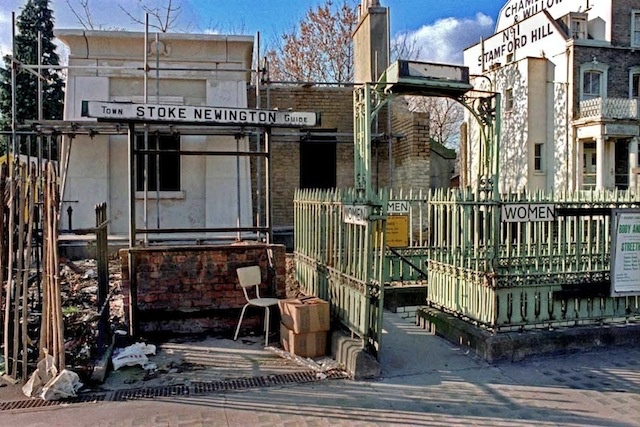
Advertisement
Alan Denney: I first started when I moved to Hackney in the early 1970s. Just like a lot of other younger people, I was radicalised by the Vietnam War, the conflict in Northern Ireland and stuff like that. I thought photographs would be a way of creating a revolution, so I started making a record of life around me. I started with the streets, derelict houses, boarded-up shops, factories being knocked down and the unemployment. People resisting, protesting and going about their day-to-day life.
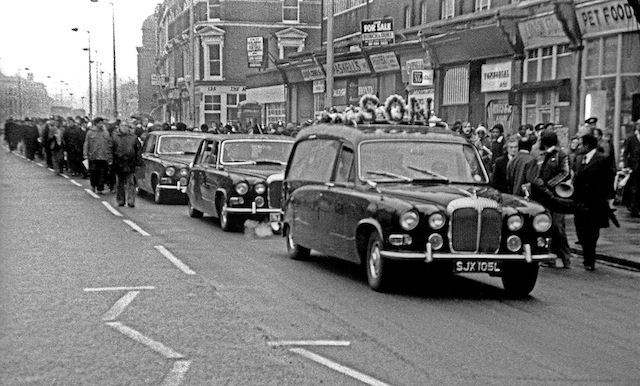
He was a teenager, 17 or 18 years old. This was in the 70s, and he got into a fight in the street. Apparently he’d been stabbed, so he made his way into what was the Stoke Newington police station, presumably to ask for help. Well, he died there. He bled to death. Stoke Newington police station had an awful reputation for its racism, crooked cops and violence. It was a scary place. And, at that point, the community had obviously had enough of it and turned up in their masses to show their support.
Advertisement
.jpg)
Ah yes – Sandringham Road, notorious for drug dealing. The funny thing about it was you could buy cannabis from there any time of day. It was apparently controlled by the police. The police would arrest dealers, confiscate their stuff and allegedly re-sell it through "police-approved" dealers. It was a racket that went on well into the 1980s. There were a couple of enquiries; a few people got arrested, including some officers.In photographing the area, you've also – by default, I suppose – captured the gentrification that's been taking place over the past few decades. Does it seem like a drastically different place to you than it used to?
The only drastic changes are the physical changes. In 1970, there were a lot of boarded-up houses, tons of boarded-up shops and a lot of rubbish everywhere. Then the gentrification came along, the empty houses got bought up and done up to be nice houses, and it’s brought different shops to the area. But, for the majority of people who live in Hackney, there hasn’t been a change. Life is as nasty and short as it always was. The level of poverty in Hackney is as high as it ever was, and – for most people today – Hackney life is a struggle.
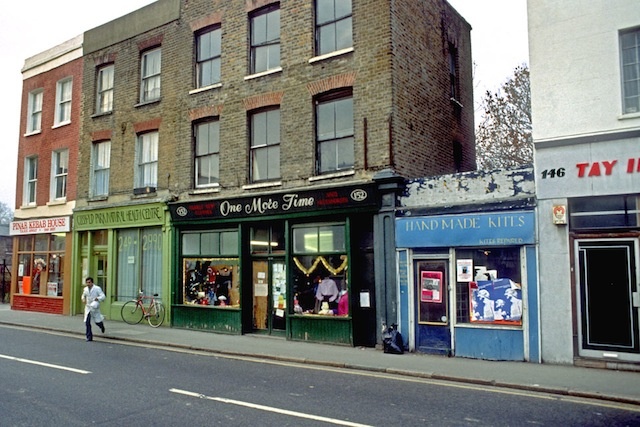
Advertisement
Well, it's also brought in the white middle class, who weren't here before. Which, in a way, has heightened the difference in the population. Places like Church Street, with its new shops, resturants and bars, is just round the corner from the high street, which is a completely different story – mostly Turkish, working class. And the two don’t really mix.They actively don't mix?
A couple of years ago, Clissord Park was given lots of money to revamp itself, which they did quite nicely. There used to be an ordinary cafe there; beans on toast and cups of tea – that sort of thing. Once the work was complete, the cafe was turned into place with expensive wines. That kicked up a fuss within the community – people weren't happy that their local park and cafe was available to a certain class of person, with the working class being excluded. People made comments like, "I like it because it keeps the riff raff out." So you can see the divisions are there.I noticed you've photographed lots of different second-hand shops over the years – how do they play into the gentrification theme?
The difference between those shops and today's stores is that they were there for the working class, and now they’re not.
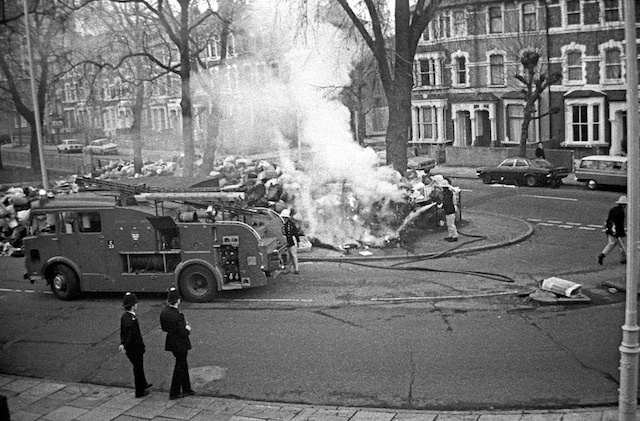
Yeah. I suppose that’s when capitalism went into crisis in the 70s – there were strikes all over the place. It was the industrialisation people complaining about a reduction in their earnings and a decline in working conditions. It came to the point where the working refuse collectors got the sack. It was the beginning of 1979 and they stopped collecting the rubbish for about three or four months. There were huge mountains of rubbish deposited in the streets and parks – it looked quite like the apocalypse, really.
Advertisement
No, it was a cinema. In the 20s it used to show Yiddish films, and in the 50s it went to mainstream Hollywood kind of stuff – I remember it showing martial arts films from Hong Kong in the 70s. Then it closed. There were about half a dozen cinemas in the high street. There aren't any now, apart from the Rio. So that one was bought up by the Turkish community and turned into quite a beautiful mosque.
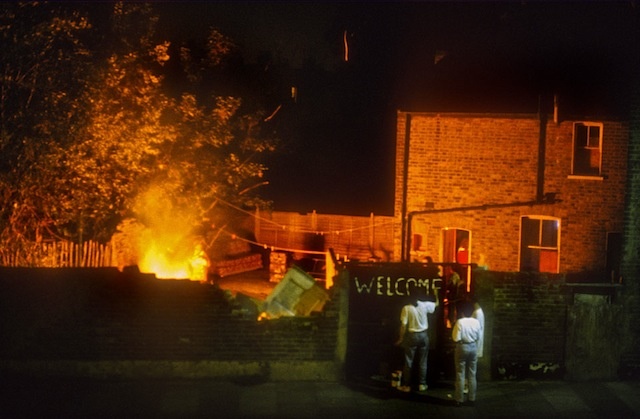
A couple of years, I think. There were lots of squats in the area – squatting was very common in the 1970 and 80s. The local authority would go into these buildings, rip out the sinks, floorboards and anything that would make the building inhabitable. But with squatters being quite resourceful people, they’d hook the water, electricity and anything else they needed back up.Some of your recent photos, from 2007 onwards, show the aftermath of stabbings. Is that something you've noticed more of?
Not really, I just happened to be there [on those occasions]. Unfortunately, these things happen. On the second week of coming to London in 1974, I had been working one weekend and came back home to find police all over the house. Two people got into a fight upstairs and one person ended up killing the other. Which was pretty intense.
Advertisement

I think it’s yet to come. Since the Second World War, it has been a place of poverty. Life is alright here for a small percentage of white middle-class people, but for most people it's not. So I'd say we're still waiting for the golden age to arrive.Do you see Stoke Newington becoming part of the Dalston "strip" of bars, restaurants and clubs?
Yes, I suppose. The Dalston-infication hasn’t got that far up yet. In the last couple of months a gallery has opened on the high street; at the end of my street, a new coffee shop. Mostly it's still Turkish shops, but it is slowly changing.
.jpg)
Yeah. I haven’t got a problem with those Dalston hipsters – they have as much right to spread their wings as anybody else.Do you plan to continue living in Stoke Newington?
Yeah, I don’t have any plans on moving. We are very happy, brought our kids up here and are very comfortable living here.Great. Thanks, Alan!View more of Alan's work on his Flickr. Follow Jake on Twitter: @Jake_PhotoMore photographers we like:When Love Sucks, Why Not Date Yourself?Tim Page's Vietnam WarThe Amazing Lost Legacy of the British Black Panthers